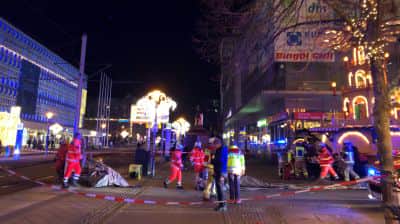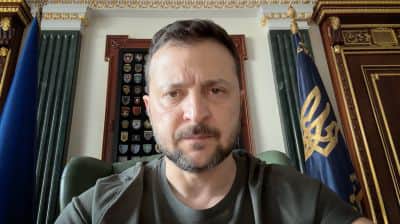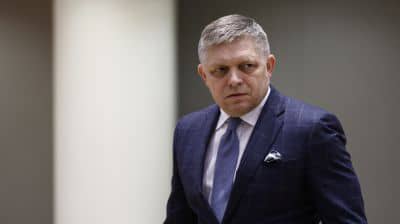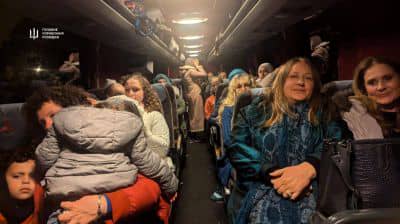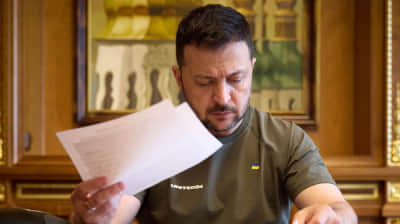ISW analyses Russia's versions of A-50 and Il-22 downing
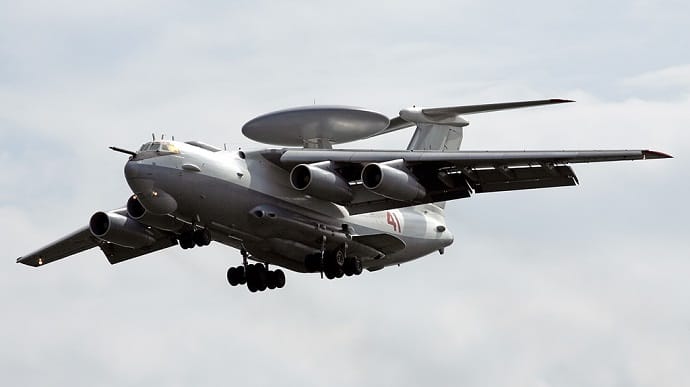
The Institute for the Study of War (ISW) has analysed the Russian versions of the downing of a Russian A-50 long-range radar detection aircraft and damage to an Il-22M airborne command post plane.
Source: ISW
Details: Ukrainian officials have stated that Ukrainian forces destroyed a Russian A-50 airborne early warning and control system (AWACS) aircraft and severely damaged an Il-22 airborne command post plane on the night of 14 January.
General Valerii Zaluzhnyi, Commander-in-Chief of the Armed Forces of Ukraine, posted a video of the two planes disappearing from radar, showing that Ukrainian forces struck the A-50 and Il-22 over the Azov Sea.
Valery Romanenko, a leading researcher at the Ukrainian State Aviation Museum of the National Aviation University, said that the loss of the A-50 and members of its crew was "very painful" for Russia since a large part of the A-50's crew is highly specialised and must undergo several years of training.
Ukraine’s Operational Command Pivden (South) stated that before this strike, Russia had only three A-50 aircraft out of six in service.
At the same time, the Russian information space mostly denied that Ukrainian forces shot down the A-50 aircraft, claiming instead, in a somewhat peculiar manner, that the aircraft was destroyed by "friendly fire" from Russian anti-aircraft defence.
Analysts point out that the A-50 is used for coordinating the actions of Russian aircraft and possibly air defence. The claim that Russian air defence shot down the A-50 would be a catastrophic failure for the Russian forces if true.
A Russian source specialising in Russian aircraft has accused Russian commanders of lacking the proper background required for their positions. The review notes that Colonel General Viktor Afzalov, the current commander of the Russian Aerospace Forces, has extensive experience in Russian air defence.
The ISW experts say that regardless of whether the lack of pilot experience creates any issues for Russian air operations, which is doubtful, his experience in air defence should be sufficient to prevent Russian forces from shooting down their own airborne command aircraft.
A Russian insider source claiming to have ties to an undisclosed Russian security structure asserts that unidentified Russian entities fabricated a "duck" (a Russian term for a false claim) about how Russian forces shot down the A-50. The purpose of this fabrication, the source said, was to reassure Russian pilots that flights over the Black and Azov Seas were still safe and that the incident was due to human error.
"It is unclear why Russian pilots should be more comfortable with the idea that their ground-based air defenders are so incompetent," the review reads.
Kremlin spokesperson Dmitry Peskov stated that he did not have any information about the downed aircraft and recommended that journalists check information about this with the Russian Defence Ministry.
"The Russian MoD has not made an official statement about the incidents as of this publication," the analysts say.
To quote the ISW's Key Takeaways on 15 January:
- Ukrainian officials announced that Ukrainian forces destroyed a Russian A-50 long-range radar detection aircraft and severely damaged an Il-22 airborne command post aircraft on the night of 14 January.
- A senior Ukrainian intelligence official confirmed that Russian forces can generate forces at a rate equal to Russian monthly personnel losses, which is consistent with ISW’s assessment that Russian forces are able to conduct routine operational-level rotations in Ukraine.
- Skibitskyi indicated that international sanctions are constraining Russian missile and drone production as Russian forces likely continue to adapt their missile and drone strike packages in an effort to penetrate Ukrainian air defences.
- German outlet BILD reported on classified German documents describing a hypothetical scenario to prepare for a possible future conflict between NATO and Russia. Developing such scenarios, which are usually classified, is a normal task for professional military staffs.
- Ukrainian President Volodymyr Zelenskyy arrived in Switzerland on 15 January to discuss aspects of the Ukrainian peace plan and support for Ukraine with global leaders at the Davos World Economic Forum from 15 to 19 January.
- A North Korean delegation including North Korean Foreign Minister Choi Song Hui arrived in Moscow on 14 January for an official state visit to Russia on 15 to 17 January.
- Russia and Iran are preparing to sign a Grand Interstate Treaty to further develop Russian-Iranian military-technological cooperation.
- The Kremlin is intensifying censorship measures to limit criticism of the Russian war effort in Ukraine ahead of the March 2024 presidential election.
- Russian forces made confirmed advances west of Donetsk City and near Krynky amid continued positional fighting along the entire line of contact.
- The so-called Donetsk People’s Republic (DNR) is reportedly forming a women’s drone operating detachment.
- The Ukrainian Main Military Intelligence Directorate (GUR) stated that Ukrainian resistance forces detonated a Russian military UAZ Patriot vehicle in occupied Melitopol, Zaporizhzhia Oblast, injuring four Russian personnel and killing an unspecified number of personnel.
Support UP or become our patron!
